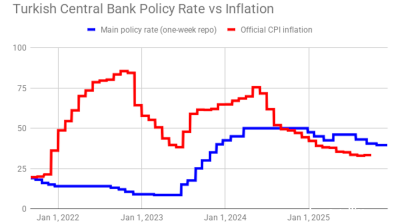Dividend season is approaching and Russian companies will pay out some $10.7bn this year to their shareholders on their 2015 results, forecast to rise to $15.7bn next year on 2016 financial results. Russia's best companies now have some of the highest dividend yields in the world.
After years of ignoring minority shareholders, the most significant change in the Russian stock market in the last few years is management's willingness to share profits with their investors by paying dividends. The companies that pay out the highest dividend yields have been constituently amongst the best performing stocks. So who will pay the most this year?
VTB Capital tried to answer the question in a report published in February and listed a top ten. The dividend season is about to kick off in the summer months of June and August when two thirds (68%) of all dividends will be paid worth collectively $10.7bn on their 2015 results, according to VTBC analysts, of which about $3.7bn will go to stock in the free float of these companies. However, that amount will increase by up to a third for the 2016 financial year to $15.7bn as earnings recover.
"According to our estimates, the largest contributors to the cash dividend stream from Russian companies in 2016 are Gazprom (FY15 payment, $2.2bn in total, $1.1bn to free float), Norilsk Nickel (FY15 and 1H16 payments, $1.4bn in total, $0.5bn to FF), Rosneft (FY15 payment, $1.4bn in total, $0.1bn to FF), Lukoil (FY15 payment, $1.0bn in total, $0.5bn to FF) and SurgutNG (FY15 payment, $1.0bn in total, $0.6bn to FF)," analyst Sergei Galkin said in the report.
And some Russian companies have started to pay handsome dividends. The whole idea of using dividends to get cash out of a company and into shareholders pockets was pioneered by oligarch Roman Abramovich after President Vladimir Putin won the presidential elections in 2000 for the first time. Having been one of the men to put Putin into office, Abramovich quickly realised he had created a monster and began to withdraw from business. The font of his wealth, oil major Sibneft, began paying out 100% of profit and more as dividends for several quarters in a row before eventually being sold to Gazprom in September 2005. Investors into Sibneft's stock at the time rode along with the bonanza dividend payments.
VTBC estimate that the average dividend yield on financial year 2015 payments for companies listed on the RTS will be 3.1% this year and 3.4% for those Russian stocks included in the widely followed MSCI Russian index. However, there are several that pay as much as five-times more. Privately owned Surgutneftegas continues to top the table with a whopping 15.6% dividend yield followed by pump maker HMS Group (12.5%), real estate developer LSR Group (10.8%). The epitome of the dividend paying stocks is the Moscow Exchange (Moex), which has been increasing its dividend payment virtually every year and now has the highest dividend yield of any exchange in the world, paying out 58.2% of net annual profit to shareholders.
"We take what we need to continuing building up the exchange's infrastructure, but we believe strongly that what is left over after this should be returned to our shareholders," Moex CFO Evgeny Fetisov told bne IntelliNews in an exclusive interview last year.
And dividend yields are likely to get bigger, says VTB. The crisis has meant competition for investment has grown stiffer and as Russian companies have been largely cut off from international capital markets, more of them, like gold producer Polymetal, are looking at their stock as a possible source of financing things like mergers and acquisitions. VTBC estimate the forward dividend yield averages will rise to 4.1% for the RTS and 4.4% for the MSCI stocks over the next 12 months.
The new dynamic in the dividend story is that the cash-strapped state is leaning on the state-owned enterprises (SOE) to pay more dividends. All SOEs are required to pay out 25% of their profits as dividends, but many of them pay less thanks to exemptions or choosing to calculate their profits under Russian accounting standards (RAS) rather than International Financial Reporting Standards (IFRS), which produces a much lower profit number. The state is now trying to nix many of the exemptions and force more of its companies to use the IFRS standard. Russia's Federal Property Management Agency estimates the state's income from dividends increase by RUB110bn ($1.38bn) for the budget this year just by being stricter about the 25% rule.
All SOEs were due to start paying at least 35% of profit based on IFRS from 2016, according to a plan unveiled by the Finance Ministry in September 2013. That would have more than tripled the budget's earnings from dividends to almost RUB761bn ($11.7b), according to government estimates at the time, but the plan is now in limbo. However, talk of reviving it has appeared in the last two months and some are even suggesting hiking dividend payments to 50% of profits.
"The SOE dividend payout theme remains on the agenda. The Ministry of Economic Development's draft proposal that state-run companies pay out 25% of IFRS was considered by the government and then returned back for further improvement with the recommendation to take into account remarks from the Federal Antimonopoly Service which, according to the media, insists on making room for possible exemptions to the dividend distribution requirement of 25%," says VBTC's Galkin.
"Later, during discussions on the potential measures to contain the budget deficit, Rosimushchestvo proposed the idea of increasing SOE payouts further to 50%. The Ministry of Economic Development supported Rosimushestvo's initiative and clarified that should the proposal be approved it would only affect the dividends of companies directly owned by a government body (e.g. Rosneftegaz, not Rosneft). According to Alexey Ulyukayev, both proposals are currently being discussed," reports VTBC's Galkin.
There is still time to get involved as the bulk of the record dates fall between June and July with the bulk of the payments being made between June and August.


Data

Turkey's central bank remains cautious, delivers 100bp rate cut
Decision comes on eve of next hearing in trial that could dislodge leadership of opposition CHP party.

Polish retail sales return to solid growth in September
Polish retail sales grew 6.4% year on year in constant prices in September, picking up from a 3.1% y/y rise in August, the statistics office GUS said.

Uzbekistan’s nine-month foreign trade nears $60bn
Export growth of 33% and import expansion of 16% y/y produce $6.4bn deficit.

Hungary’s central bank leaves rates unchanged
National Bank of Hungary expects inflation to fall back into the tolerance band by early 2026, with the 3% target sustainably achievable in early 2027 under the current strict policy settings.




